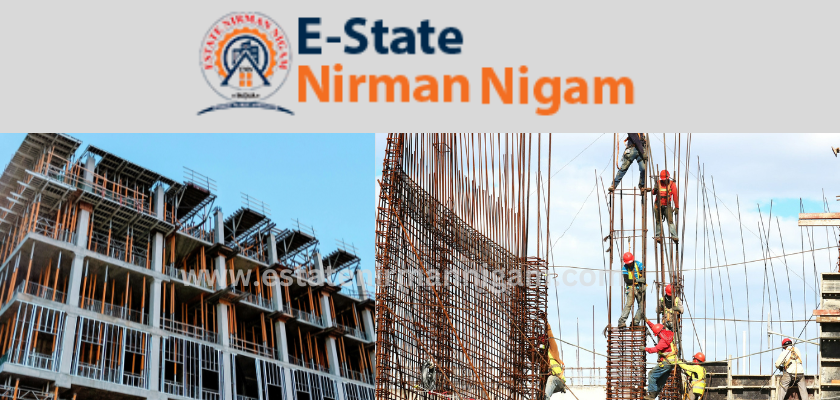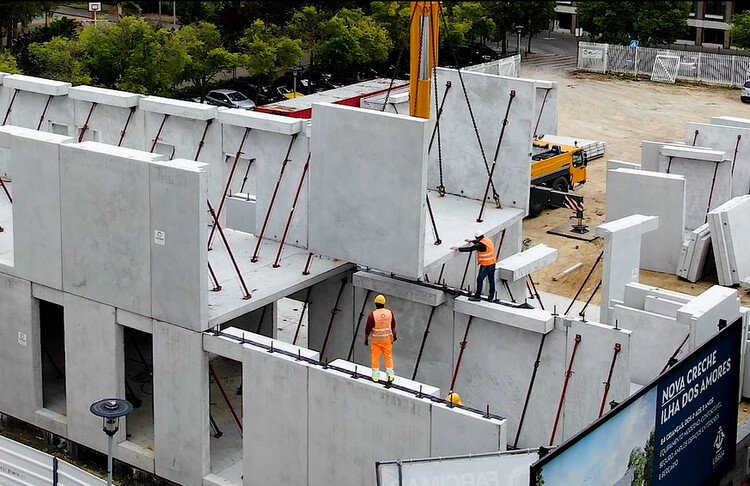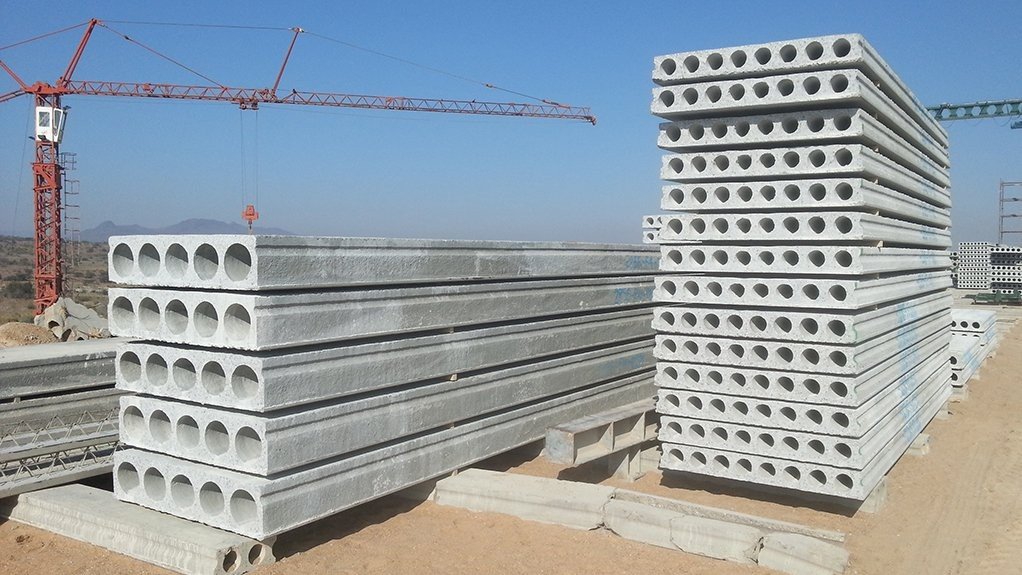E-state Nirman Nigam Pre-cast Construction In The District Of Bijnor
E-state Nirman Nigam Pre-cast construction is a method where concrete elements are cast in a reusable mold or form off-site and then transported to the construction site for assembly. This approach offers numerous advantages, including increased efficiency, quality control, and sustainability. In this comprehensive explanation, we’ll delve into the intricacies of pre-cast construction, covering its history, processes, advantages, limitations, applications, and future prospects In all over district of Bijnor

History of Pre-cast Construction:-
Pre-cast construction has its roots in ancient civilizations, where materials like stone and clay were molded and assembled to create structures. However, modern pre-cast techniques emerged in the 20th century, driven by the need for faster and more cost-effective construction methods. The development of reinforced concrete and advancements in mold-making technologies facilitated the rise of pre-cast construction as a viable alternative to traditional on-site casting.
Processes Involved:-
Design and Engineering: Pre-cast construction begins with meticulous design and engineering to determine the specifications of the concrete elements and the molds required for casting. This stage involves structural analysis, detailing, and coordination with architects and other stakeholders.
Mold Fabrication: Custom molds, also known as forms or shutters, are fabricated based on the design requirements. These molds can be made from various materials such as steel, timber, or fiberglass, depending on factors like durability, cost, and complexity of the formwork.
Concrete Casting: Once the molds are ready, concrete is poured into them and allowed to cure under controlled conditions. The composition of the concrete mix is tailored to meet strength, durability, and aesthetic requirements.
Demolding and Finishing: After the concrete has sufficiently cured, the molds are removed, revealing the pre-cast elements. Finishing touches such as surface treatments, texturing, and painting may be applied to enhance the appearance and durability of the elements.
Transportation and Installation: The finished pre-cast elements are transported to the construction site using specialized equipment such as trucks or cranes. They are then assembled and connected to form the final structure according to the construction plans.

Advantages of Pre-cast Construction:-
Speed: Pre-cast elements can be manufactured concurrently with site preparation and foundation work, reducing overall construction time.
Quality Control: Factory-controlled conditions ensure consistent quality and precision in pre-cast elements, minimizing errors and defects.
Cost Efficiency: Although initial investments in molds and equipment may be higher, pre-cast construction often results in cost savings due to reduced labor, material wastage, and construction time.
Versatility: Pre-cast construction allows for a wide range of shapes, sizes, and finishes, enabling architects and designers to realize diverse architectural visions.
Durability:- Pre-cast concrete is inherently durable and resistant to weathering, corrosion, and fire, making it suitable for long-lasting structures.
Sustainability:- By optimizing material usage, reducing construction waste, and incorporating recycled materials, pre-cast construction can contribute to sustainable building practices.

Limitations and Challenges:-
Transportation Constraints:- Large and heavy pre-cast elements may pose logistical challenges during transportation, requiring careful planning and coordination.
Design Flexibility:- While pre-cast construction offers versatility, complex designs may be more challenging and costly to execute compared to traditional cast-in-place methods.
Connection Details:- E-state Nirman Nigam Ensuring proper alignment and structural integrity at connection points between pre-cast elements can be technically demanding and require specialized engineering.
Maintenance Considerations:-Although pre-cast concrete is durable, regular inspection and maintenance are necessary to address issues such as cracking, spalling, and corrosion over time.
Pre-cast construction finds applications in various sectors:-
Residential: Housing developments, apartment buildings, and individual homes can benefit from the speed and efficiency of pre-cast construction.
Commercial:- Offices, retail complexes, and industrial facilities often incorporate pre-cast elements for their structural and aesthetic advantages.
Infrastructure:- Bridges, tunnels, culverts, and other infrastructure projects leverage pre-cast concrete for its strength, durability, and rapid construction capabilities.
Specialized Structures:- Pre-cast construction is also used for specialized structures such as parking garages, stadiums, educational facilities, and healthcare buildings.

Future Trends:-
Digitalization:- The integration of digital technologies such as Building Information Modeling (BIM) and automation is expected to streamline pre-cast construction processes and enhance efficiency.
Advanced Materials:- Ongoing research into innovative materials, including ultra-high-performance concrete (UHPC) and fiber-reinforced polymers (FRP), could further improve the performance and sustainability of pre-cast construction.
Prefabrication Innovation:- Continued innovation in prefabrication techniques and modular construction methods may lead to new opportunities for off-site manufacturing and assembly.
Sustainability Focus:-As environmental concerns become increasingly prominent, there is growing interest in sustainable practices such as carbon-neutral concrete production and recycling of pre-cast elements at the end of their lifecycle in the E-state Nirman Nigam.




